"When people talked of late springs, father recalled that on the 18th of April, 1870, his father drove across the lake to Buffalo, on the ice from "the Point," and that two days later neighbors, the Sherks, made the same trip. "But they had to jump the horses over a four foot crack in the ice, and so came back by the road."
That winter closed in quite early in November, for it began to snow November the 10th and the snow stayed until late spring. That date is accurate for it was the year of his marriage and he could make no mistake.
There was little formal entertaining in those days. But social intercourse seems to have been attached to as much of the work as possible.
Sheep-washing time early in May was a sort of picnic.
The men drove the sheep in one great flock to the mouth of the little creek that lazily crept into the lake. Once I remember some of the women accompanying them and we children went too, of course.
But to return to the landmarks. We spoke of the old stone house. There are two of them in the vicinity. The big one just east of what is now "Crystal Beach" known generally as " the Clause House" which was the Alexander home. A sturdy Scotch pioneer was Mr. Alexander. His family are all gone now. The girls, all but one, married neighbor boys. The one son drifted away. but came back to die among the scenes of his boyhood.
Perhaps no woman was better known or loved in the neighborhood than the oldest of the Alexander girls, Margaret. "Auntie Sloan" she was, to all the countryside.
The Sloans lived in the stone house at the Point (Abino) or many years after their marriage, and a volume might be written of them. It would be fascinating, too, if it aid justice to its subject.
He was an American, tall, with a rather straggly grey beard reaching nearly to his waist, and kindly, merry eyes. 'The Squire' he was very fond of reading and owned by far the best library in those parts. But for "Auntie," his business, after he left the stone house for the more pretentious farm home on the Fort Erie road, would have suffered severely, for she was the more energetic of the two.
There was always a light in the window of the stone house when a storm raged on the lake.
The story of how "Auntie" cared for one group of ship-wrecked sailors was told in these columns not many months ago. She stayed at home the day of the Battle of Ridgeway and fed and sheltered a group of the weary boys who fled from the Battle-field that day.
One of them was sorely wounded, and he remained in her care until his recovery. Afterward he opened a drug store at Port Colborne, and "Auntie" could never pay for anything at Charlie Lugsdin's, and many a surprise parcel she found in her basket on arrival home; for she always had a chat with "her boy" when she made her infrequent visits to "The Bay" for the old people never went to Port Colborne, but to Gravelly Bay.
A younger sister of hers, Mrs. Jack Teal, was the only woman who stayed in Ridgeway June 2, 1866, and Grandma Schooley refused to leave her baking that day to go with the other frightened women. She too fed a group of the boys.
Even if it is a depression, perhaps it would be well to mention that the Fenians were frightened that day by the cattle breaking through the underbrush near the battle field and ran back toward the Niagara River. They imagined it was cavalry, else the tablet in the "Memorial Church" at Ridgeway which commemorates those who gave their lives in the defense of their country that day, would have been much larger.
Visiting preachers sometimes made touching references to the names recorded on the simple marble slab. One grey-haired old man spoke with trembling voice of his chum "Malcolm McEchren, and we could almost see the stalwart young man cut down in his prime. Another referred to his intimacy with "Willie Temple" and we saw a gentler lad, winsome, clever, brave.
That winter closed in quite early in November, for it began to snow November the 10th and the snow stayed until late spring. That date is accurate for it was the year of his marriage and he could make no mistake.
There was little formal entertaining in those days. But social intercourse seems to have been attached to as much of the work as possible.
Sheep-washing time early in May was a sort of picnic.
The men drove the sheep in one great flock to the mouth of the little creek that lazily crept into the lake. Once I remember some of the women accompanying them and we children went too, of course.
But to return to the landmarks. We spoke of the old stone house. There are two of them in the vicinity. The big one just east of what is now "Crystal Beach" known generally as " the Clause House" which was the Alexander home. A sturdy Scotch pioneer was Mr. Alexander. His family are all gone now. The girls, all but one, married neighbor boys. The one son drifted away. but came back to die among the scenes of his boyhood.
Perhaps no woman was better known or loved in the neighborhood than the oldest of the Alexander girls, Margaret. "Auntie Sloan" she was, to all the countryside.
The Sloans lived in the stone house at the Point (Abino) or many years after their marriage, and a volume might be written of them. It would be fascinating, too, if it aid justice to its subject.
He was an American, tall, with a rather straggly grey beard reaching nearly to his waist, and kindly, merry eyes. 'The Squire' he was very fond of reading and owned by far the best library in those parts. But for "Auntie," his business, after he left the stone house for the more pretentious farm home on the Fort Erie road, would have suffered severely, for she was the more energetic of the two.
There was always a light in the window of the stone house when a storm raged on the lake.
The story of how "Auntie" cared for one group of ship-wrecked sailors was told in these columns not many months ago. She stayed at home the day of the Battle of Ridgeway and fed and sheltered a group of the weary boys who fled from the Battle-field that day.
One of them was sorely wounded, and he remained in her care until his recovery. Afterward he opened a drug store at Port Colborne, and "Auntie" could never pay for anything at Charlie Lugsdin's, and many a surprise parcel she found in her basket on arrival home; for she always had a chat with "her boy" when she made her infrequent visits to "The Bay" for the old people never went to Port Colborne, but to Gravelly Bay.
A younger sister of hers, Mrs. Jack Teal, was the only woman who stayed in Ridgeway June 2, 1866, and Grandma Schooley refused to leave her baking that day to go with the other frightened women. She too fed a group of the boys.
Even if it is a depression, perhaps it would be well to mention that the Fenians were frightened that day by the cattle breaking through the underbrush near the battle field and ran back toward the Niagara River. They imagined it was cavalry, else the tablet in the "Memorial Church" at Ridgeway which commemorates those who gave their lives in the defense of their country that day, would have been much larger.
Visiting preachers sometimes made touching references to the names recorded on the simple marble slab. One grey-haired old man spoke with trembling voice of his chum "Malcolm McEchren, and we could almost see the stalwart young man cut down in his prime. Another referred to his intimacy with "Willie Temple" and we saw a gentler lad, winsome, clever, brave.
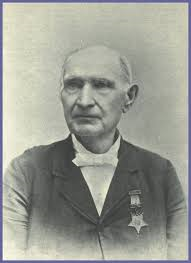
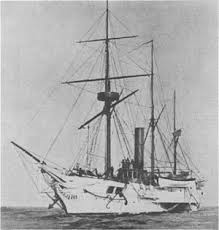
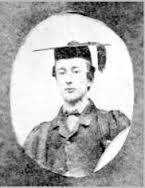
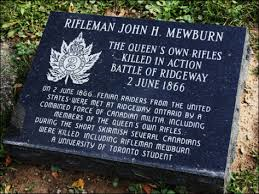
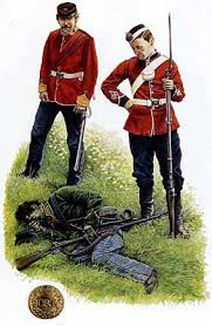
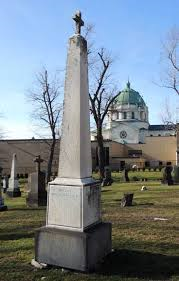
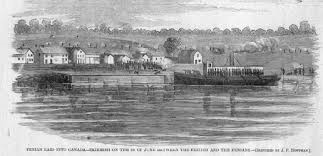
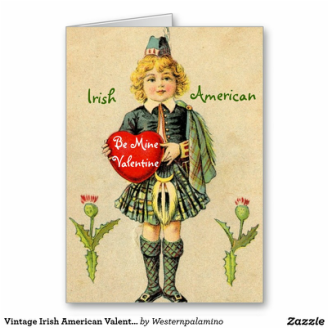
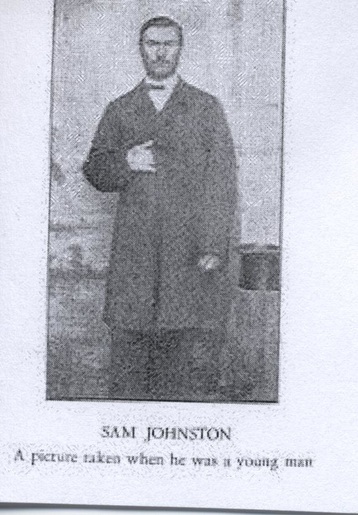
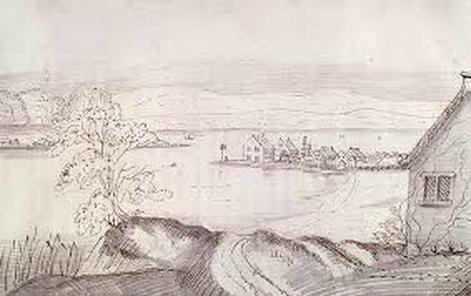
 RSS Feed
RSS Feed